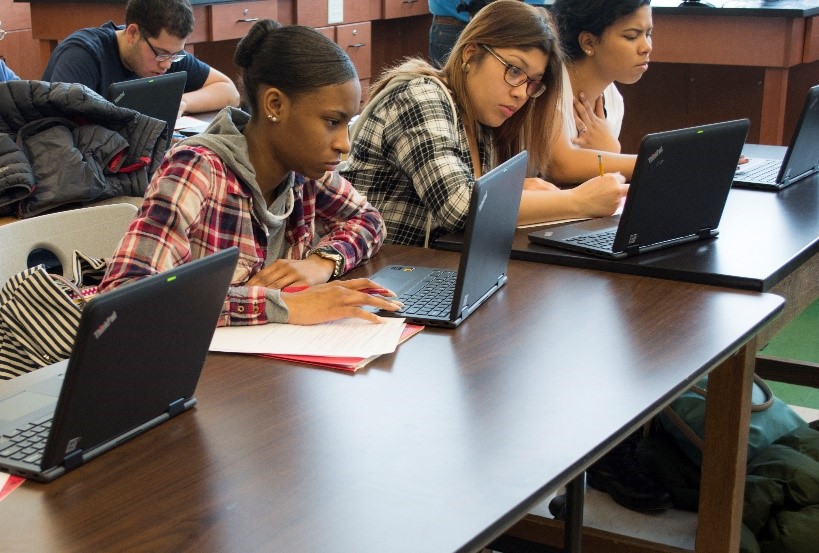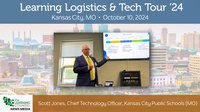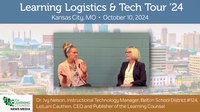An innovative online program is helping to bridge the gap between school and work for students at risk of dropping out in Anderson County, Tenn.
Anderson County students are no strangers to virtual learning, as the district offers three unique virtual tracks through its Innovation Academy. The first track, Anderson County Online Learning Academy, allows homeschooled students to stay enrolled in the county schools, taking virtual courses at home with the option to take additional courses on campus.
The second track, Opportunity Credits, helps students in the county with scheduling issues. For example, if a student has band during a certain class block, but he also needs another class that’s only available during that block to graduate, he can take that class virtually through the Opportunity Credits track. Students also have the chance to recover credits they might not have passed the first time around with the Opportunity Credits track.

But it’s the third track that really excites English teacher Krista Whitaker. Dubbed "Bridge Academy" to represent a "bridge over troubled waters" and also bridging the gap to adulthood, the track targets at-risk high school seniors with the potential to drop out or not graduate on time.
“Dropout rates had been a severe problem for us,” said Whitaker. “Juniors would say, ‘I won’t be able to make it through senior year; I want to drop out and get my GED.’”
To combat the problem, Anderson County launched Bridge Academy, a blended-learning program to help students make up credits and graduate on time. Students work online at their own pace, but they come to school to do this—where they receive guidance from a classroom teacher.
After trying several online curricula without seeing the desired results, Anderson County found Odysseyware, and it was a perfect fit.
"The curriculum is tailored to the student as opposed to whole-class instruction, where you have to teach a certain standard each day but can't really focus on a student's deficits," said Whitaker. "With Odysseyware and with online learning in general, I'm able to give students more one-on-one attention."
Every aspect of the Academy is designed to prepare students not just for graduation, but for life outside of high school.
“The classroom itself looks just like an office. All students have their own cubicle that they can decorate or stock with office supplies,” said Whitaker. “We wanted Bridge Academy to be very work-oriented so students could learn skills they might have been lacking, like organization and time management.”
Once students arrive at “the office,” it’s time to get to work. Many students are using the virtual program to make up two years’ worth of coursework in one academic year.
“It’s a lot of work, and our students know that coming in,” said Whitaker. “But they really want to do it because they want to graduate at the age of 18 instead of at 19 or 20, and they want to get out with a high school diploma and start working.”
To manage each student’s graduation needs, Bridge Academy has a dedicated counselor who helps students create the best virtual schedule possible.
“Every student is different, so each student has a different schedule. Some make up credits over the summer, then work on credit recovery for the first nine weeks, then start new credits,” said Whitaker.
The flexibility and customization of Odysseyware’s platform have been instrumental to the program’s success.

"Our students aren’t just limited to working during the school day like they would be in a traditional classroom, and that really helps,” she said. “Most of them work on four classes on campus, and then they work on one or two more classes at home. They also have the option to work through breaks if they need to.”
The virtual environment also allows students to work at their own pace. If students want to spend two hours on English, they can. If they want to spend 30 minutes on it, that’s fine, too.
“It’s very individualized, and I’m able to work with each student’s strengths and weaknesses more than I would in a normal classroom. As a teacher, I really like that,” said Whitaker.
Bridge Academy’s results speak for themselves. Since its inception six years ago, 106 students have graduated through the program. “Last year, we had a 100-percent graduation rate, which is almost unheard of for an at-risk program,” said Whitaker.
However, she’s quick to caution that high graduation rates don’t mean the program is easy.
“The curriculum itself is very rigorous. If you work through it and study and take notes, it will make you college-ready,” Whitaker said. “A few of my students have come back this year and said, ‘Hey, Ms. Whitaker, that English class I took online last year really taught me how to write this essay for Comp I in college,’ which is wonderful to hear.”
And when students graduate from Bridge Academy, they’re not only prepared for academic success, but for success in the real world as well.
“Our students have to stay on top of things and be more organized than they normally would in a typical classroom, because they don’t have a teacher telling them every day to turn in assignments or what to work on next,” she said. “I’ve seen a lot of students grow throughout the year. As they learn how to keep a schedule, make a to-do list, and follow a pacing guide, they become a responsible ‘mini-adult.’ I think it’s a great growing experience.”











